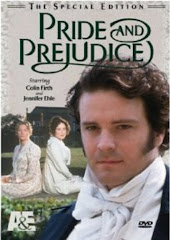Along with Hamlet, King Lear, and Macbeth, Othello is one of Shakespeare's four great tragedies and thus a pillar of what most critics take to be the apex of Shakespeare's dramatic art. Othello is unique among Shakespeare's great tragedies. Unlike Hamlet, King Lear, and Macbeth, which are set against a backdrop of affairs of state and which reverberate with suggestions of universal human concerns, Othello is set in a private world and focuses on the passions and personal lives of its major figures. Indeed, it has often been described as a "tragedy of character"; Othello's swift descent into jealousy and rage and Iago's dazzling display of villainy have long fascinated students and critics of the play. The relationship between these characters is another unusual feature of Othello. With two such prominent characters so closely associated, determining which is the central figure in the play and which bears the greater responsibility for the tragedy is difficult.
More than anything else, what distinguishes Othello from its great tragedies' peers is the role of its villain, Iago. While the usurper King Claudius of Hamlet, the faithless daughters of Lear, and the unnatural villains of Macbeth (Macbeth, his Lady and the Weird Sister witches) are all impressively evil in their own way, none of them enjoys the same diabolical role as Iago.
Iago is a character who essentially writes the play's main plot, takes a key part in it, and gives first-hand direction to the others, most notably to the noble Moor, Othello. The play presents us with two remarkable characters, Iago and his victim, with Iago as the dominant force that causes Othello to see the infidelity of his young and beautiful wife, Desdemona, with his favorite lieutenant, Michael Cassio. Indeed, not only is "seeing" and the gap between appearance and reality a central theme of the play, it overlaps with other major thematic strands (trust, honor, and reputation) and sheds light on still others, including the theme of patriarchy and the political state.
Written in 1604, Othello is one of Shakespeare's most highly concentrated, tightly constructed tragedies, with no subplots and little humor to relieve the tension. Although he adapted the plot of his play from the sixteenth-century Italian dramatist and novelist Giraldi Cinthio's Gli Hecatommithi, Shakespeare related almost every incident directly to the development of Iago's schemes and Othello's escalating fears. This structure heightens the tragedy's ominous mood and makes the threat to both Desdemona's innocence and the love she and Othello share more terrifying.
Although narrow in scope, Othello, with its intimate domestic setting, is widely regarded as the most moving and the most painful of Shakespeare's great tragedies. The fall of a proud, dignified man, the murder of a graceful, loving woman, and the unreasoning hatred of a "motiveless" villain—all have evoked fear and pity in audiences throughout the centuries. If it lacks the cosmic grandeur of Hamlet or King Lear, Othello nevertheless possesses a power that is perhaps more immediate and strongly felt for operating on the personal, human plane.
Thursday, April 29, 2010
Subscribe to:
Post Comments (Atom)





No comments:
Post a Comment
Note: Only a member of this blog may post a comment.